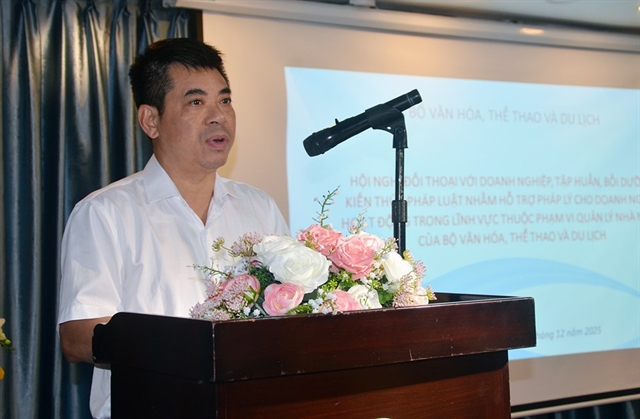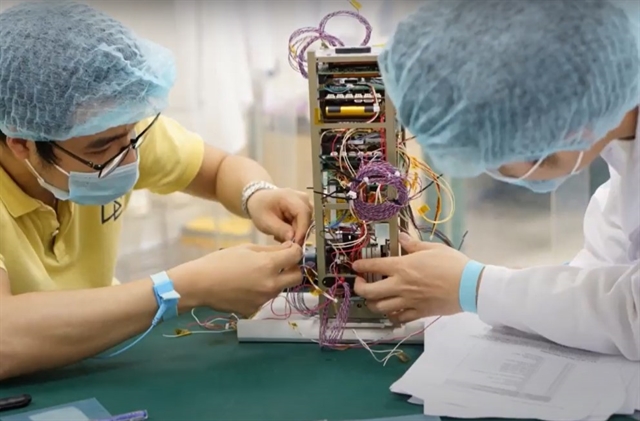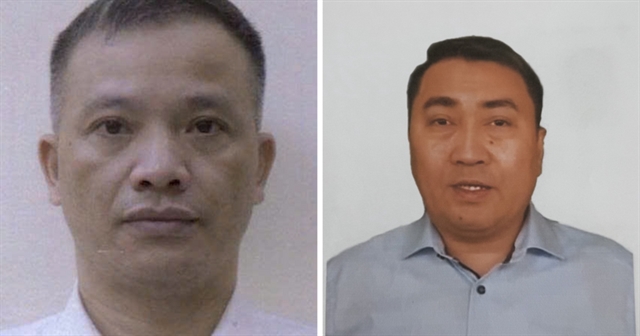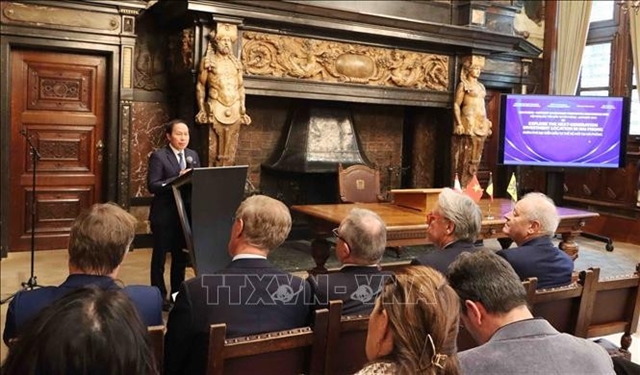 Society
Society

Nano Dragon, the first satellite made in Việt Nam, has boldly gone where no satellite made in Việt Nam has ever gone before.
UPDATE at 9am October 1: Satellite launch postponed
The launch of Việt Nam’s first satellite that was made entirely on home soil has been delayed. The NanoDragon four-kilogram device was due to blast off from the Uchinoura Space Center in the Japanese town of Kimotsuki, Kagoshima Prefecture at 8am Friday morning. But just moments before lift-off, space engineers pulled the plug due to technical reasons. It is understood a second attempt will be made at the same time on Saturday morning. NanoDragon would have been Việt Nam’s third satellite to go into space, although the first made entirely by Vietnamese engineers. Lê Xuân Huy, Việt Nam National Space Centre Deputy Director, said on Friday morning after the launch was postponed: “About one minute before launch, Japan Aerospace Agency (JAXA) decided to pause to check the system. “After the inspection, the Launch Agency decided to suspend the launch event on October 1. The reason for the pause and the next launch schedule will be announced later by JAXA.” |
By Kiều Trinh & Hồng Vân
Nano Dragon, the first satellite made in Việt Nam, has boldly gone where no satellite made in Việt Nam has ever gone before.
Just before 8am October 1 (Việt Nam time), Nano Dragon is set to be launched at the Uchinoura Space Centre in Japan. One small step in space, but one giant leap for Việt Nam.
Carried by the Epsilon 5 rocket, the satellite is scheduled to be detached for its lone cruiser at 9.03am.
The 4kg cube satellite took seven years to develop by scientists from the Vietnam National Space Centre (VNSC), a project under the National Science and Technology Program on Space Technology.
Lê Xuân Huy, Deputy General Director of the Centre, told Việt Nam News: “The successful launch of a satellite is a moment of great pride for the developers. This is motivation for us to do more and look forward to the next step if the satellite will work successfully and can communicate with ground stations as well as receive and transmit signals to perform our commands.”
The satellite is tasked with two important missions. Operating in orbit at an altitude of about 560km it will receive signals to identify vessels, through AIS (Automatic Identification System) and send the signals to the monitoring centre to check the entry and exit of vessels as well as help avoid collisions.
The second mission of Nano Dragon is taking aerial photos to help scientists perfect satellite navigation systems.
Huy added: “We also placed a camera in the satellite and equipment to control the position of the satellite.
“When the satellite is in its orbit, we will order it to take images of different localities from space.
“The satellite will capture images according to our commands and we will use these images to assess the quality of the control system.”
As the first satellite designed and manufactured entirely in the country, without the help of foreign experts as well as the high technology of related manufacturing industries, Nano Dragon is a small but very proud achievement of Việt Nam’s space industry.
The manufacture of satellites has never been easy, especially given the limitations of related industries in Việt Nam. Most of the domestic manufacturers were not interested in building satellites because they are only produced in a single unit and requires high precision.
Finding materials to build it was also a challenge.
“There is some equipment that we wanted to buy but we could not,” Huy said.
“In that case, we had to change our design. We have this same problem for many modules, as we have to design based on what equipment we have, our design becomes complicated.
“In Việt Nam, we haven’t had a facility to design and develop satellites. Every time when we finish a part, we have to send it abroad for testing and bring it back home to develop or adjust.
“The back-and-forth process took a lot of time, especially in this era of COVID.”

|
| The satellite was produced entirely by Vietnamese scientists. Photo VNSC |
Nano Dragon is the third satellite that the Vietnam Space Centre has produced, but construction of the other two was heavily aided by Japanese scientists. This is the first made in full by local engineers.
The first satellite, Pico Dragon, was produced in 2007 and launched into space in 2013. This 1kg satellite was responsible for taking pictures of the Earth, measuring a number of satellite parameters and the space environment, and testing communications with the ground.
The second satellite, Micro Dragon, was launched in 2019. This carries a sensor that observed the colour of coastal waters to monitor water quality and detect oil slicks in the sea.
It is also used to locate aquatic resources and provide information about animals and plankton living in the observed sea. Images taken by the Micro Dragon satellite were used as data to exchange with international parties to enhance the ability to respond quickly in disaster prevention and climate change activities.
VNSC scientists know they still have a big responsibility on their hands and this launch is the first steps on a long journey.
Huy added: “Mastering the technology of designing, manufacturing and operating satellites will help Việt Nam to proactively source aerial images, reduce dependence on foreign data, especially in urgent situations.
“This is not the final product. It is grounding for us to develop more satellites and develop our team to do more complicated things. Successfully creating Nano Dragon is just a small step to prepare for the big plan to master space technology in Việt Nam.” VNS




